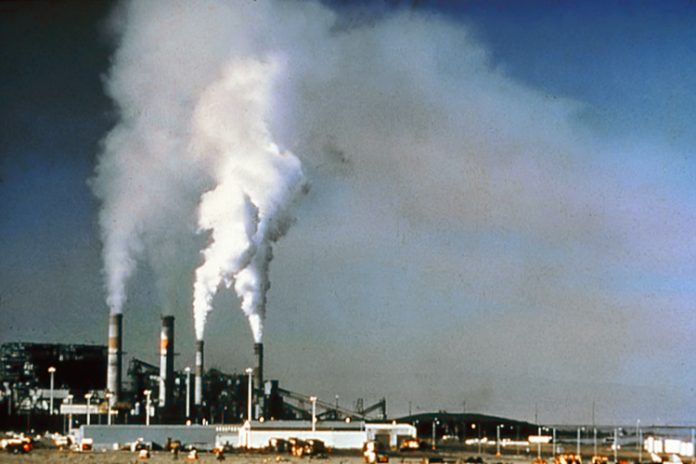This article is written by Jaskaran Singh Saluja, student of Institute of Law, Nirma University. In this article, the author discusses the effect of Polluter Pays Principle by National Green Tribunal.
Table of Contents
Introduction
Most of the business people do not consider the well-being of the environment to be their responsibility or under their domain. If such an interest of people is to be promoted and reminded them off, it is not merely possible to do this by reminding them of their social obligations. There are legislative definitions of what constitutes a pollutant in the Water (Prevention and Control) Act, 1974, the Air (Prevention and Control of Pollution) Act, 1981, and the Environmental Protection Act, 1986. The Water Act defines pollution as “such contamination of water likely to create a nuisance or liable to render such water harmful and injurious to health” similar definitions have been incorporated in the further legislations. The Principle of Polluter Pays can be said to be an extension of the Absolute Liability Principle. The Principle of absolute liability is invoked regardless of whether or not the person took reasonable care, and it makes him liable to compensate those who suffered on account of his inherently dangerous activity (see here). The Polluter Pays Principle (hereinafter “P.P.P.”) extends the liability of the polluter to the scope of retaining back the same position to what it was before such harm was caused. The polluter pays Principle broadens the ambit of the Principle of absolute liability. The importance of this principle is that the damage to the environment may be remedied, and this is exceptionally essential to sustainable development.
Despite the potential that the P.P.P. holds to protect the environment, it could not find its place in the Indian Legal System till it was invoked in the Enviro-Legal Action Case (see here) as late as 1996. The Polluter Pays Principle demands that the financial costs of preventing or remedying the damage caused by pollution should lie in the undertakings which generate pollution or produce the goods that cause the contamination.” The judgment of the above case on the P.P.P. and the justification for invoking it was reaffirmed by another Bench in 1996, in the case of Vellore Citizens Welfare Forum v. Union of India (see here). In these cases, the use of the P.P.P. has been justified via the constitutional mandate, statutory provisions, and international customary law. In these cases, the use of the P.P.P. has been justified via the constitutional order, statutory regulations, and international customary law.
The present paper, in light of the same, tries to look upon the judicial viewpoint and how the said legal interpretation of the polluter principle has changed over the period. Further, it also studies the impact of such an analysis on the Environment Law legislation existing in India and how it has evolved.

Role of N.G.T. in Enforcing Polluter Pays Principle on the Accused
The National Green Tribunal (from now on “N.G.T.”) is a judicial body having the jurisdiction to adjudge any civil case where there is an involvement of very substantial issues related to the environment. The said body is established through the legislation named ‘The N.G.T. Act, 2010’. As a result of which, any civil matter which contains a question of substantial nature identifying with the environment under rules like the Forest Act, 1927, the Environment Protection Act, 1986, the Water Act, 1974, the Air Act, 1981 and so on can be settled upon by the Tribunal. Section 20 of the N.G.T. Act (see here) expresses that the N.G.T. will apply the standards of Sustainable Development, the Precautionary Principle and the Polluter Pays Principle when rendering a choice, or request or an honour. Section 19 of the N.G.T. Act (see here) clarifies that the N.G.T. goes behind the standards of natural justice and not follow the principles of C.P.C., 1908. The term used by the Tribunal to portray procedural rights in lawful frameworks dependent on English law is Natural Justice.; rights which start from thoughts of profound quality, for example, the law of ‘Audi Alterum Partem,’ which means both the parties to the dispute must get an opportunity to be heard by the Court. These core values have empowered the N.G.T. to arbitrate environment-related questions with regards to the interest of the environment under the law without being hampered by any stringent procedural guidelines, not at all like the ordinary common courts.
In Jan Chetna v. Ministry of Env. And Forests (see here), the NGT examined the principles laid down under Brundtland Report on Sustainable Development and reiterated that PPP was an integral part of Indian Env. Law. The Judgement clarifies that PPP was effective and applicable in such areas which were governed by uniform environmental law, i.e., nation-state through domestic frameworks. In contrast, an international rule had advanced to the degree that it was viewed as progressively viable through household systems.
Further, in the case of P.N. Khanta v. the State of H.P., the issue arose before NGT was related to the air and noise pollution at the Rohtang Pass glacier in Shimla due to a large number of entries of vehicles on to the motorable roads. The NGT implemented PPP to the practical effect by imposing a fee on each vehicle to contribute to State Govt. Green Tax Fund instead of asking a particular polluting industry, thereby widening the scope of who should pay (see here). Further, rather than granting harm post-arbitration, it forced a pre-emptive payment representing inescapable harm, in this way mitigating the requirement for precise appraisal of harm and case for damages.
The NGT further developed the PPP in one case related to water pollution in the Yamuna River. The NCR of India, i.e., Delhi, is located on the banks of Yamuna. The NGT ordered that every household in Delhi is required to pay a minimum fee of Rs. 100 for env. Compensation, with the charge directly proportional to the water bill or the property tax paid by the said household. In this way, the distortion of PPP arises, which is beard by citizens in a restoring environment. This arrangement is similar to tax but uses PPP as a justification, which is unfair. As talked about previously, this bending of the P.P.P. brings about residents bearing the weight of re-establishing the environment, and with no reasonable connection between the “payers” and the contamination.
Judicial Approach Towards Polluter Pays Principle
Over the period, Judgments of Indian justice indicate that Indian courts have recognized the P.P.P. The attitude of the Court has, from time to time, evolved from an environmentally friendly approach to a developmentally friendly one. The P.P.P. was recognized for the first time by the Indian judicial authority in the case of the Indian Council for Env. Legal Action v. U.O.I. (see here) in which the Court held that, if the activity was dangerous or inherently dangerous, the person is bound to make a recovery for the damages caused to others by any iniquitous event exercised by that person, regardless of any situation. Therefore, such a rule is based primarily on the Principle of the nature of the action performed. “the duty of the courts is not to protect the application of the law which is the function of the executive, but as the duty of executive has not been done properly, Courts or judiciary has to interfere and must provide instructions to enforcement authorities or instruct the law for the prevention of F.R.s implement the people.”
The lack of executive action in India has led to some comments that the ‘polluter pays’ Principle has radically been transformed into ‘pay and pollution.’ It has been shown that the prosecution of polluters is minimal, as the Pollution Board has not given much attention to this issue. The case goes to the environmental control authority, and the board has imposed fines on offenders, who were reluctant to take criminal action. In many instances, the courts have reiterated the importance of prosecution in such cases of pollution. It is essential to initiate criminal proceedings against offenders to ensure deterrence between them. By only paying for it, it does not have a significant impact on the perpetrators, and therefore a recurrence of pollution has been observed in those cases. Another problem that can be seen is a criminal liability and its impact on businesses.
Previously, the companies were not held responsible for any action, as they considered the legislative function to be presumptuous. The courts have defined the criminal liability of the company as the liability that a corporation has for the criminal acts of a natural person of the enterprise. This term is difficult to define today as it includes various areas of crime. Another thing is determining the liability of the individual. Since a corporation is made up of numerous individuals to be held for the crime?
Further on account of M.C. Mehta v. Kamal Nath (see here), the Court has talked about the P.P.P., and that has been redirected towards being condition inviting. It is settled by this Court one who contaminates the earth must compensate for reversing the harm brought about by his sinful acts. The Court disposed of this matter by giving a show-cause notice to the span motels, that, why Pollution fine for causing pollution and damages be not imposed as directed by us. This case subsequently came up in front of the Court in the year 2000 (see here) and headed to the span motels that: “The Power of this Court under Article 32 are not limited, and it can grant damages in a P.I.L. or a Writ Petition as has been held in a progression of decisions”. Henceforth, Court directed a late notice to be issued to M/s. Span Motel to show cause why in addition to damages, exemplary damage be not awarded for having committed the acts set out and detailed in the leading judgment. Finally, in 200215, while granting exemplary damages court held that:
“Liability to pay damages on the principle of ‘polluter pays’ in addition to damages, exemplary damages for having committed the acts set out and detailed in the leading judgment. Considering the object underlying the award of exemplary damages to be to serve a deterrent for others not to cause pollution in any manner. So the quantum at Rs. 10 lakhs is fixed for the span motels.“
Polluter Pays Principle as a Part of C.I.L. and the Vellore Case
In the 1970s, when issues related to the environment were in great concern, Governments were called on, and other institutions placed certain policies and mechanisms for the protection of the environment, at that time the OECD, i.e., Organization for Economic Co-operation and Development, advocated the Polluter Pays Principle. The Stockholm Declaration, 1973, was treated as the earliest source where the concept of Polluter Pays Principle was adopted under Principle 21 and Principle 22 of the said Declaration (see here). Accordingly, the 1989 European Environment and Health Single European Convention of 1986 contained arrangements on the utilization of the polluter pays rule. Rule 15 of the 1992 United Nations Conference on Environment and Development sets out the polluter pays Principle (see here).
Rather than its past alert during 1985-1995 periods, the Supreme Court received progressively violent results towards C.I.L. in the year 1996. In the year 1996, the Supreme Court drove by a dissident green Judge – Justice Kuldip Singh, initiated another original statute in a memorable Vellore case and perpetually applied the proportion of this case in a progression of other milestone environmental cases. In every single such case, universal ecological law was utilized considerably, and the Supreme Court built up a one of a kind household natural statute by mixing the Indian natural law with the international natural law. From now on, an exertion has been made to examine significant instances of this period and its result.
In the Vellore case (see here), the case of public interest litigation highlighting the large number of tanneries in the state of Tamil Nadu. Judge Kuldip Singh, composed of three judges, has taken a stringent position against polluting tanneries. In that case, the Court considered the history of the concept of sustainable development in international law. In this regard, the Stockholm Conference of 1972, Report of the Brundtland Commission, 1987Convention on Climate Change, 1992, Convention on Biological Diversity, 1992, etc. were taken into consideration. The Vellore case, relevant to this article, is summarized below:
- The Court held that “Sustainable Development” as a balancing concept between ecology and development has been accepted as a part of customary international law through its salient features are yet to be finalized by the international law jurists.”
- The Court was of the view that “The Precautionary Principle” and “The Polluter Pays Principle” are essential features of “Sustainable Development.”
- The Precautionary Principle and the Polluter Pays Principle have been accepted as part of the law of the land.
- According to the Court, “once these principles are accepted as part of the Customary International Law, there would be no difficulty in accepting them as part of the domestic law. It is almost an accepted proposition of law that the rules of Customary International Law which are not contrary to the municipal law shall be deemed to have been incorporated in the domestic law and shall be followed by the courts of law.”
There is no doubt that the decisions of the Supreme Court have a long way to go to reaffirm the commitment of the judiciary to environmental protection and eliminate the adverse effects of pollution. However, the Court is wrong in accepting the P.P.P. as one of the international principles. The disadvantages of the P.P.P. identified by the Supreme Court are not necessary for the P.P.P. to dissuade industry. The violation of environmental regulations mustn’t be affordable. In addition to assessing the cost of repairing, the size of the factory, and the damage caused by it to the environment will be taken into consideration. Only in this way can it be ensured that the P.P.P. acts as a deterrent in large industries, as environmental damage is often irreparable.
Analysis and Conclusion
It is well settled that India had adopted P.P.P. as the law of the Land or Part of the national law. And it has indeed helped to punish the accused who pollute the environment, but the problem is still that P.P.P. has not been appropriately implemented on every individual. Ten lakhs rupees are not treated as exemplary damages for the large organizations like Span Motels. For her, at any rate, 10 Crores Rupees damages must be paid by them, for instance. What’s more, if we take a look at the discipline in the Vellore Citizens case, it just stuns me that Rs 10,000,000 can legitimize the natural contamination spread by the tanneries in the encompassing territories. The creator accepts this isn’t a compelling method to raise reserves. We should audit the measures for deciding the standard of remuneration. In any event, it must get polluters far from the spread of contamination. This guideline requires a thorough understanding of our legal executive with a quick impact, and we basically can’t stand to delay legitimate usage in creating nations, for example, India.
The N.G.T., with its attention to Environmental law, has reliably applied the P.P.P. to blended impact over a long time since its initiation (nearly 60 years). It must be noticed that the N.G.T. has ordinary jurisdiction, which with regards to the Indian lawful framework, alludes to questions between individuals for issues that are not criminal offenses. Criminal offenses have contended under the watchful eye of assigned criminal courts.
There is no doubt that the decisions of the Supreme Court have a long way to go to reaffirm the commitment of the judiciary to environmental protection and eliminate the adverse effects of pollution. However, the Court is wrong in accepting the P.P.P. as one of the international principles. The disadvantages of the P.P.P. identified by the Supreme Court are not necessary for the P.P.P. to dissuade industry. The violation of environmental regulations mustn’t be affordable. In addition to assessing the cost of repairing the damage, the size of the industry must also be considered. Only in this way can it be ensured that the P.P.P. acts as a deterrent in large industries, as environmental damage is often irreparable.
LawSikho has created a telegram group for exchanging legal knowledge, referrals and various opportunities. You can click on this link and join:











